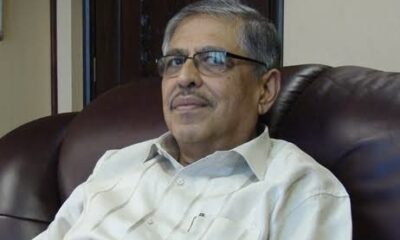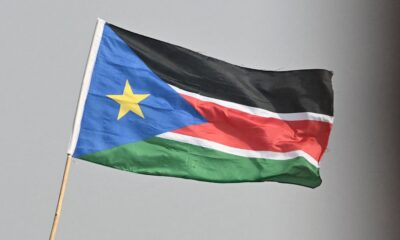Development
What The Tanzania-Uganda Oil Pipeline Mean For The East African Region

By Morris Kiruga
Uganda and Tanzania have signed a deal to build East Africa’s first major oil pipeline. It comes just two days after Kampala signed a host government agreement with French oil giant Total.
Uganda’s President Yoweri Museveni and his Tanzanian counterpart John Magufuli, signed a deal on 13 September that will see the two countries build a 1,445km, $3.5bn crude oil pipeline.
The pipeline, which will be the first of its kind in East Africa, will connect Uganda’s oil-rich Hoima region with the Indian ocean through the Tanga port in Tanzania.
Total’s involvement
The deal follows Museveni’s deal with Total, which lays the groundwork for a final investment decision in the coming months, said the French oil giant in a statement published on 11 September.
In April, Total bought Tullow’s entire 33.3% stake in licenses in Uganda, as well as its stake in the pipeline for $575m. In addition to the Ugandan and Tanzanian governments, it will now develop the pipeline with CNOOC Ltd., a subsidiary of China’s national oil company.
About 80% of the pipeline will go through Tanzania. That means the project is expected to create thousands of jobs in Tanzania, and likely a good reason to sign a similar deal with Total. President Magufuli added that the country would utilise Uganda’s experience to explore for oil in several of its regions. “When we strike oil, we will simply connect those areas to the East Africa Crude Oil Pipeline,” Magufuli said during the signing ceremony with his Ugandan counterpart on Sunday.
Highs and lows of new deal
The new deal now brings Uganda closer to a much-needed route to the sea, after a long delay that has seen it unable to utilise its oil reserves since they were discovered a decade and a half ago.
But human rights groups were quick to sound the alarm on the more than 12,000 families who risk losing their land and livelihoods on the Ugandan side.
In August, the East African country extended the deadline for an environmental and social impact assessment of its proposed refinery in Hoima district. Similar to the pipeline deal, the refinery project has struggled to take off, with a key financier pulling out in 2016.
It is now back on track under a new consortium led by General Electric.
Tanzania over Kenya
A similar deal which would have seen the pipeline routed through Kenya failed in 2016,when Uganda chose an alternate route citing security and cost concerns on the Kenyan side.
As part of its negotiations with Kenya on the cost element, Ugandan officials had suggested a shorter route through Nairobi, but it failed because it would have required displacements of settled areas.
COVID-19, politics and oil
The timing of the progress with the pipeline project coincides with election season in Uganda and Tanzania. In Tanzania, where elections are slated for late October, President Magufuli is running on a platform offinishing the work he began when he won a first term five years ago.
He is also battling criticism in his administration’s handling of the COVID-19 pandemic.
- The region’s concerns with Tanzania’s COVID-19 response were made clear during the meeting in Chato, Magufuli’s home region. While President Museveni and his entire team wore masks and maintained social distancing, the Tanzanian side did not.
- In his speech, Magufuli said Museveni had told him he would be wearing a mask. “I said you can even come with a blanket, provided we sign this agreement for the better of our countries,” he added.
- President Museveni asked the staff who accompanied him to Tanzania to be tested and quarantined once they returned home.
Museveni will also likely be seeking reelection in polls slated for early 2021. Unlike Tanzania, where the Magufuli administration stopped announcing new pandemic cases and lifted almost all restrictions, Uganda has banned campaign rallies with its election chiefs asking candidates to use media platforms instead.
Kenya Insights allows guest blogging, if you want to be published on Kenya’s most authoritative and accurate blog, have an expose, news TIPS, story angles, human interest stories, drop us an email on [email protected] or via Telegram
-

 Business2 weeks ago
Business2 weeks ago‘They’re Criminals,’ Popular Radio Presenter Rapcha The Sayantist Accuses Electric Bike Firm Spiro of Fraudulent Practices
-

 Business1 week ago
Business1 week agoIt’s a Carbon Trading Firm: What Kenyans Need to Know About Spiro’s Business Model Amid Damning Allegations of Predatory Lending
-

 Business1 week ago
Business1 week agoManager Flees Safaricom-Linked Sacco As Fears Of Investors Losing Savings Becomes Imminent
-

 News1 week ago
News1 week agoWoman Accused in High Defamation Blames AI As Case Exposes How Mombasa Billionaire Mohamed Jaffer Allegedly Sponsored Smear Campaign Linking Joho’s Family To Drug Trafficking
-

 Investigations2 weeks ago
Investigations2 weeks agoDisgraced Kuscco Boss Arnold Munene Moves To Gag Media After Expose Linking Him To Alleged Sh1.7 Billion Fraud
-

 Africa2 weeks ago
Africa2 weeks agoDisgraced Oil Trader Idris Taha Sneaks Into Juba as Empire Crumbles
-

 Investigations2 weeks ago
Investigations2 weeks agoFraud: How Sh235 Million Donor Cash For Nyamira Residents Was Embezzled Through Equity Bank Under Governor Nyaribo’s Watch
-

 Investigations1 week ago
Investigations1 week agoIntelligence Report Links Budding Politician James Mabele Magio To International Scammers Ring










